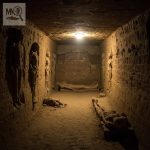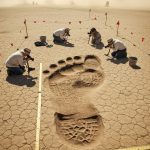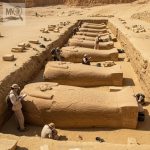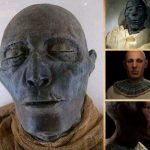BREAKING DISCOVERY: Colossal Pharaoh Sarcophagus Unearthed Beneath the Central Asian Sands
- Thuong
- October 11, 2025
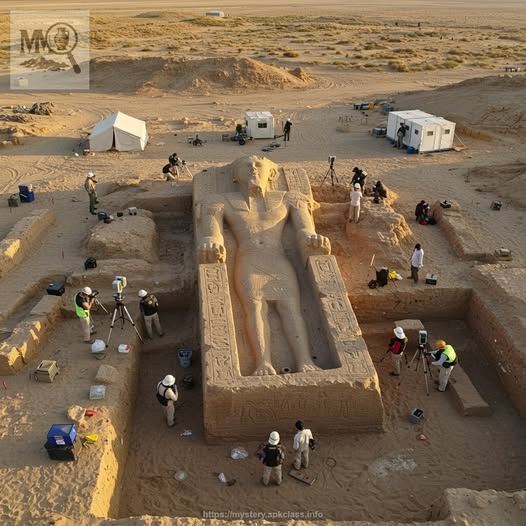
BREAKING DISCOVERY: Colossal Pharaoh Sarcophagus Unearthed Beneath the Central Asian Sands
In a revelation that has left the global archaeological community astounded, an international research team operating in a barren region of Central Asia has unearthed a monumental Egyptian-style sarcophagus, carved directly into the bedrock of a remote desert plateau. The find — measuring over nine meters in length and adorned with immaculate hieroglyphs and a pharaoh’s sculpted visage — has ignited both wonder and controversy. How could such an artifact, unmistakably Egyptian in design, exist thousands of miles from the Nile Valley?
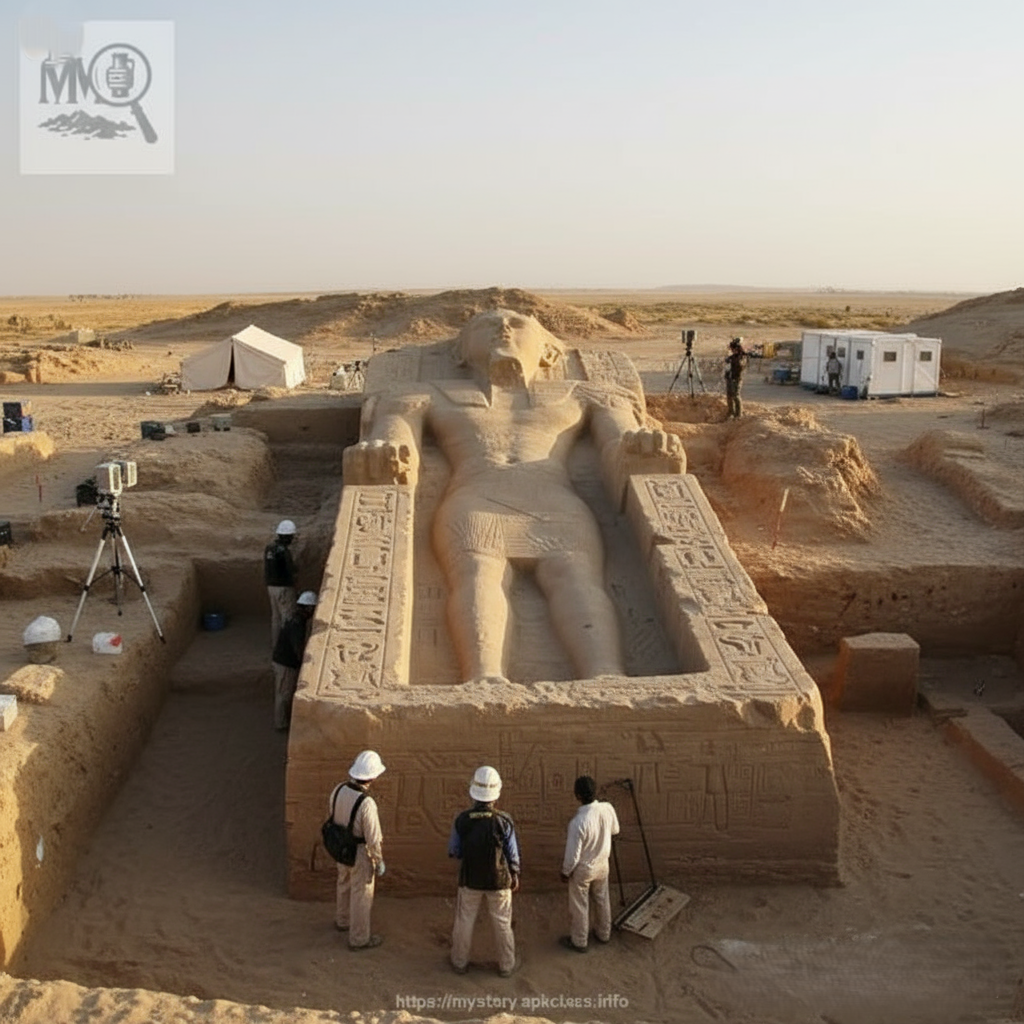
A Monument Out of Place
Initial excavations reveal that the sarcophagus is not a transported relic but a permanent subterranean structure, suggesting it was constructed on-site by unknown builders using techniques mirroring those of Egypt’s New Kingdom. The carvings depict solar motifs, funerary prayers, and a crowned ruler identified by an unfamiliar cartouche — one not listed in any known Egyptian dynasty. Carbon and mineral analysis indicate the chamber was sealed for over 4,000 years, its preservation aided by the region’s extreme aridity.
Archaeologists have also discovered anomalous tool marks unlike those from traditional chisels, and a fused silica coating around the inner walls — a feature rarely found in ancient construction. Some experts hypothesize advanced heat-based stonework, while others point to ritual or symbolic methods of sealing the tomb. The presence of hieroglyphs referencing “The Path of the Sun Beyond the Mountains” has only deepened the enigma, suggesting ancient Egyptians — or those influenced by them — may have journeyed eastward in pursuit of spiritual or cosmic significance.
Bridging Continents — Or Civilizations
The academic world remains divided. Traditional historians propose the sarcophagus as evidence of a lost migration or distant trade network connecting Egypt with proto-cultures of Central Asia. Yet alternative researchers and online theorists have offered far bolder interpretations — claiming the find supports the existence of a prehistoric global civilization, or even contact with non-terrestrial intelligences guiding ancient architecture. The uncanny precision of the engravings and the alignment of the tomb with celestial constellations mirror similar mysteries seen at Giza, Teotihuacan, and other megalithic sites worldwide.
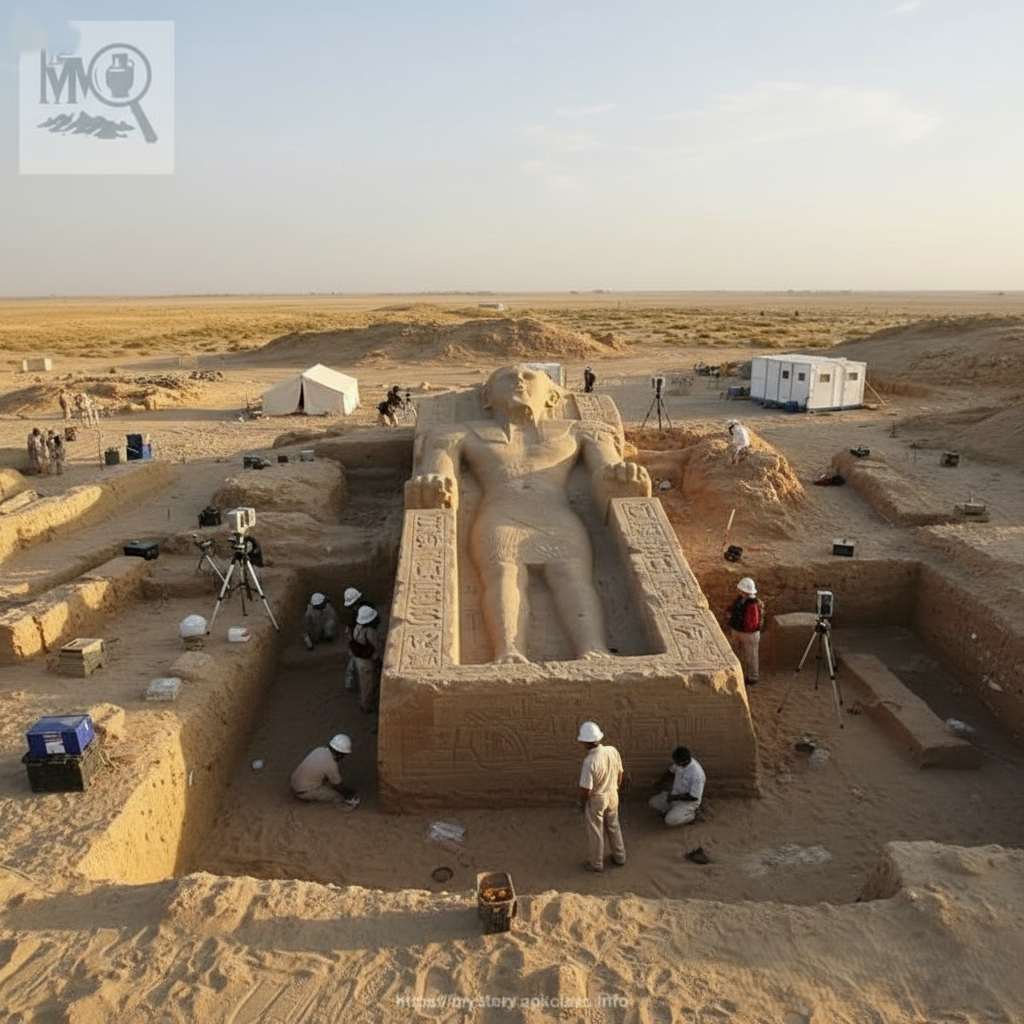
A Discovery That Challenges Everything
Government officials have since restricted access to the excavation zone, citing preservation concerns, while international media scramble for verified footage. Independent satellite imagery, however, shows a massive rectangular depression spanning several hundred meters, suggesting a complex network of tunnels or burial chambers yet to be explored.
As experts race to decode the inscriptions and secure the site, one fact is undeniable: this discovery blurs the line between archaeology and legend, raising profound questions about humanity’s shared past. Could this monumental tomb in Central Asia represent an offshoot of Egypt’s sacred royal lineage — or is it a relic from an epoch when the world’s civilizations were united under a forgotten global order?
Whatever the truth, the Giant Pharaoh of the Desert has emerged from the sands to remind us that history, as we know it, is only the beginning of a far older story still waiting to be told.
#AncientRevelation #HiddenHistory



